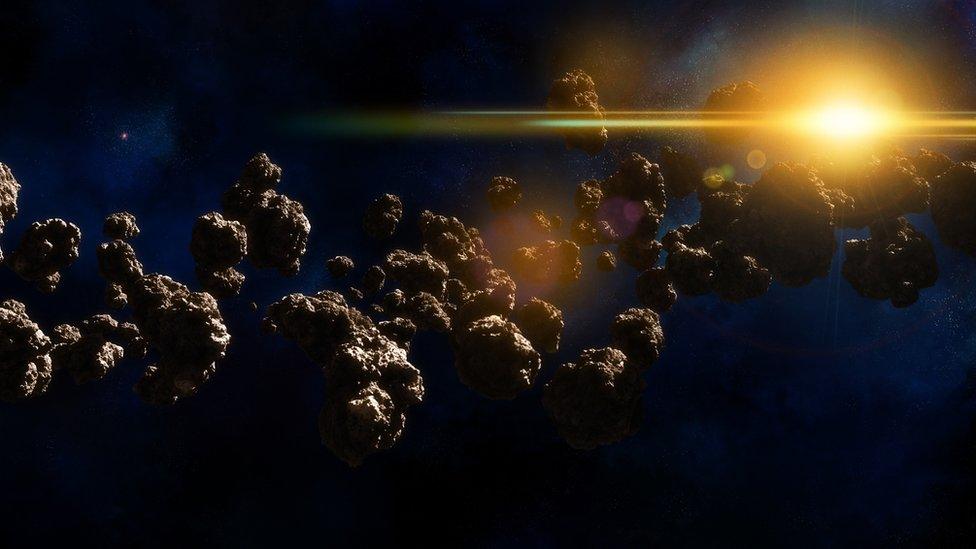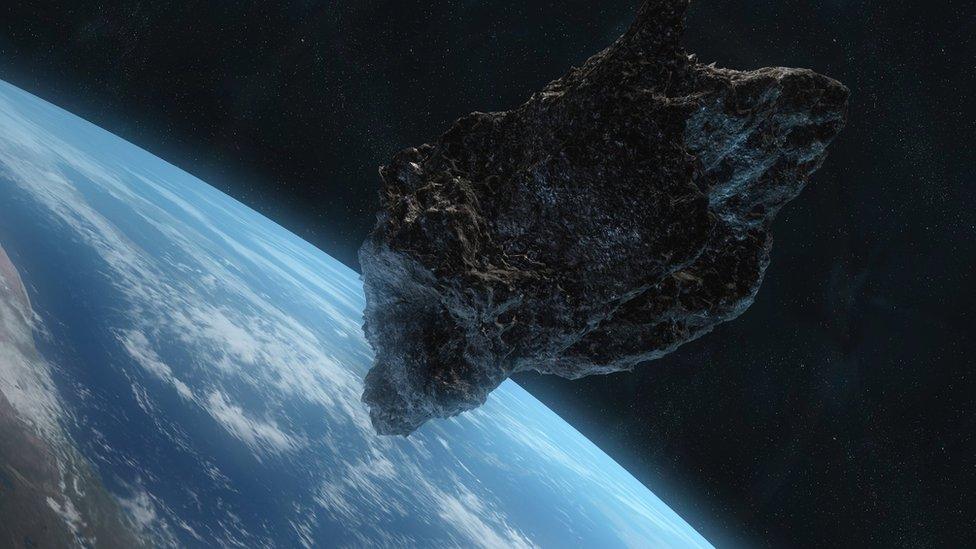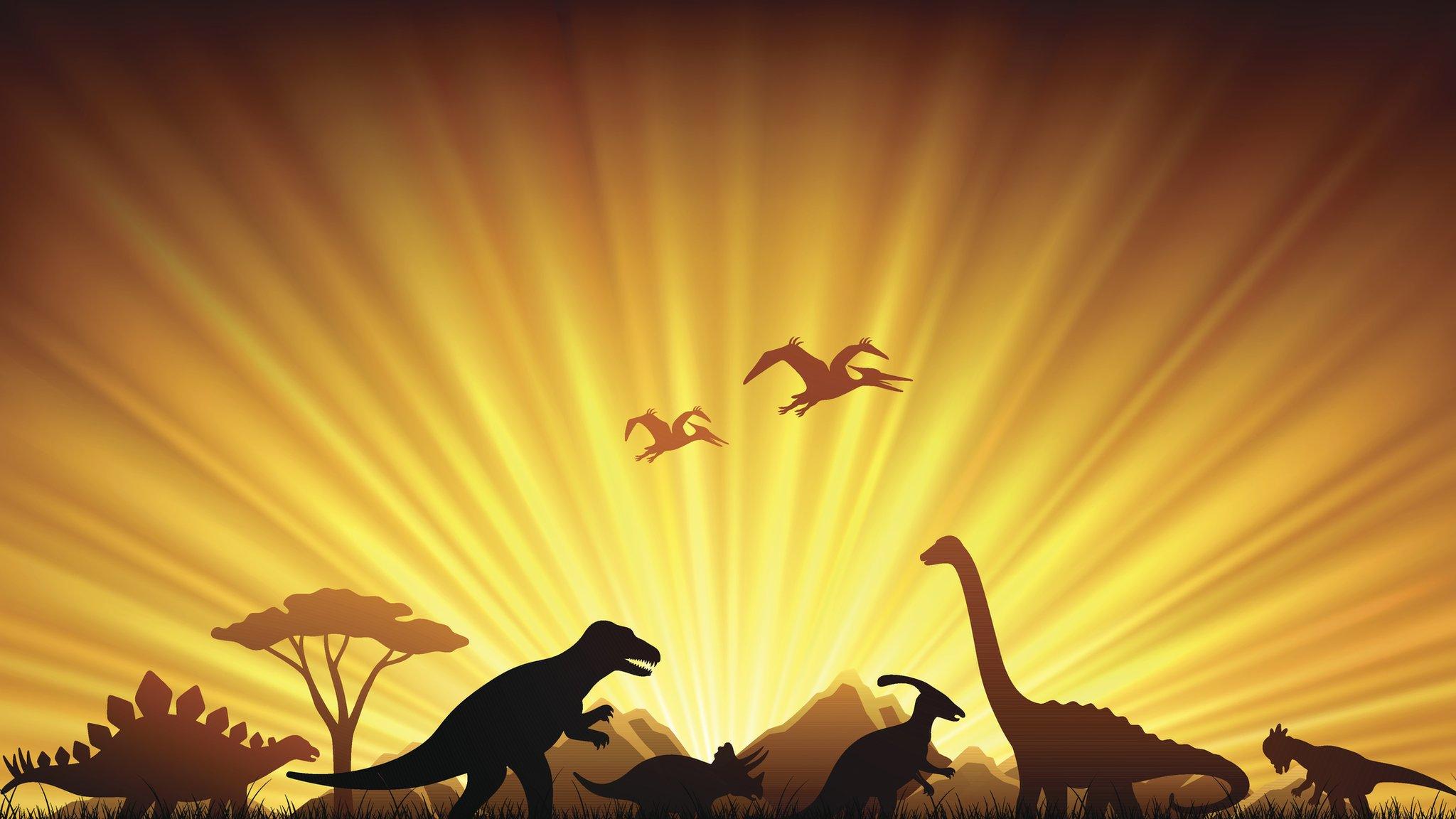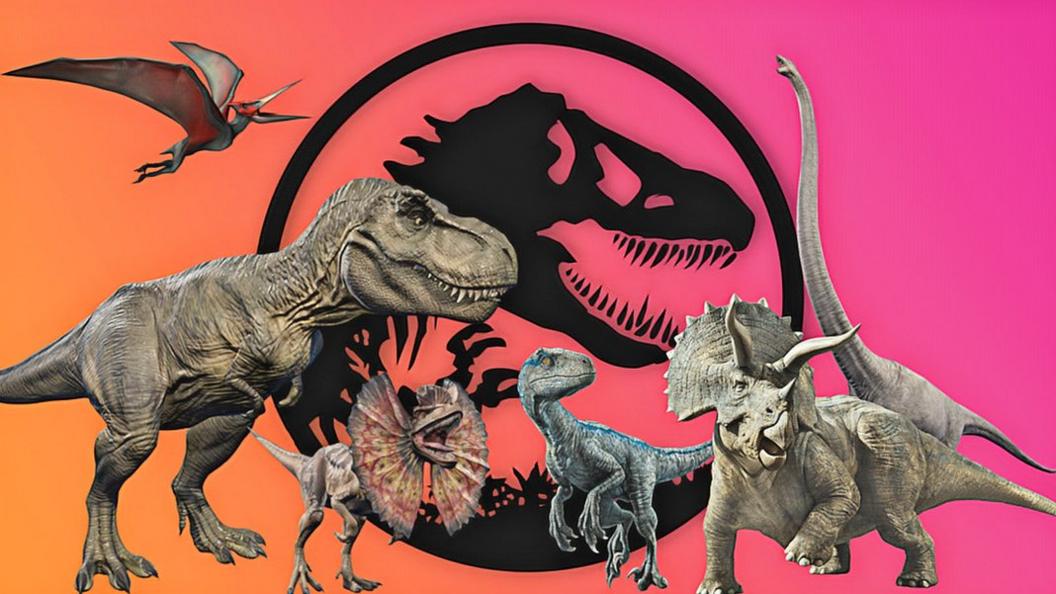Where did the asteroid that wiped out dinosaurs come from?
- Published
- comments

Scientists have worked out where the asteroid that wiped out the dinosaurs and most of life on Earth came from.
This asteroid is officially known as the Chicxulub impactor and smashed into the planet 66 million years ago.
The space rock itself was six miles wide, but it hit the surface of the Earth with so much force that it left a crater that is 90-miles wide. Today the impact crater is buried underneath the Yucatán Peninsula on the coast of Mexico.
Scientists have been trying to work out the origin of this asteroid for several years, but a new study by the Southwest Research Institute based in Texas suggests that the dinosaur-destroying rock came from the outer half of the asteroid belt in our own solar system.
The asteroid belt

The asteroid belt is located between Mars and Jupiter and is the left over bits of rock from when the planets in our solar system formed over four billion years ago.
Scientists used computer models to analyse how asteroids in that region of space are pulled from their orbit around the sun into different parts of the solar system.
It included a number of factors such as bumping into other asteroids, getting knocked out of the belt and into space.
The team also discovered "escape hatches", which are essentially where an asteroid can move out of the belt over time. Radiation in space can nudge the position of asteroids and eventually, combined with the gravitational pull of planets, the asteroids can slip out of the belt and into space, moving toward Earth or anywhere else really.
Radiation is energy that moves from one thing to another.
What's the connection?
So how did the team connect the dinosaur-destroying asteroid with those found in the asteroid belt? Well, the scientists examined what the asteroids are made of.
"We decided to look for where the siblings of the Chicxulub impactor might be hiding," said David Nesvorný, lead author of the research.

By analysing 66-million-year-old rocks on Earth, the team worked out that the Chicxulub impactor asteroid had a similar make-up to space rock called "carbonaceous chondrite impactors" found in the asteroid belt.
Carbonaceous chondrite impactors contain carbon in the form of graphite - that's the same stuff that's inside your school pencils!
So could this happen again?
WATCH: How Nasa plans to stop asteroids hitting Earth in the future (2017)
The short answer is yes - but you don't need to worry!
The team tracked 130,000 asteroids in the belt between Mars and Jupiter. They discovered that similar rocks to the one that caused the dinosaurs' extinction were hard to find, and were generally much smaller. The biggest was about one mile in length.
However, the research did reveal that bigger asteroids were at least 10 times more likely to hit the Earth than previously thought.
But, any collision with large asteroids will happen once every 250 million years or so on average, so there's still another 184 million years to go until another asteroid similar to the one that wiped out the dinosaurs heads for our planet.
- Published30 June 2020

- Published9 March 2021

- Published11 June 2021

